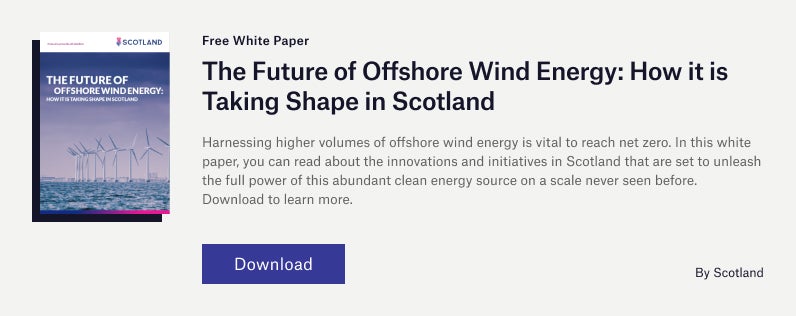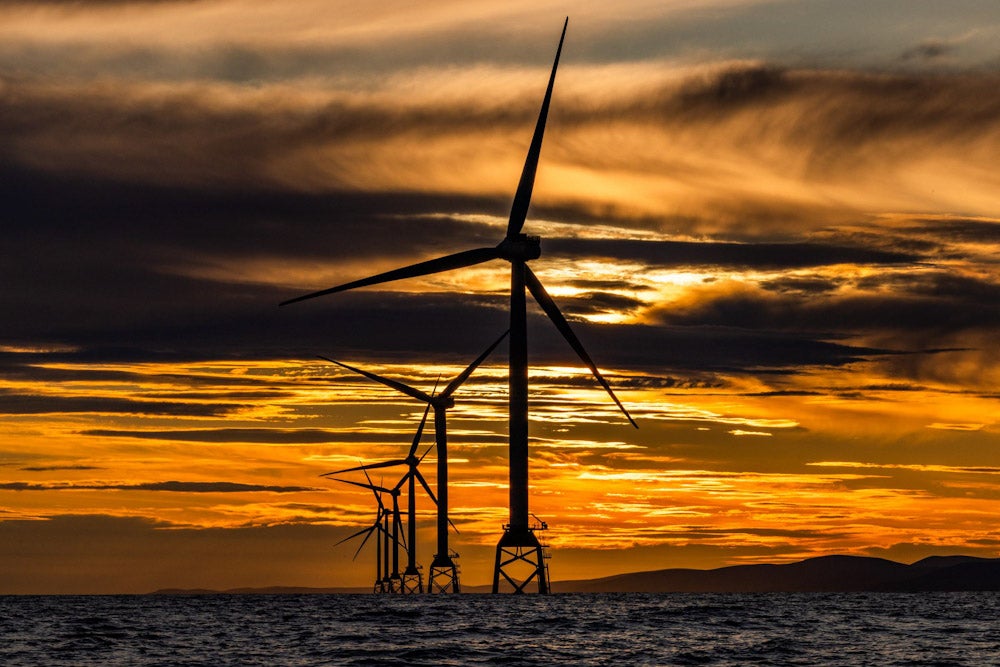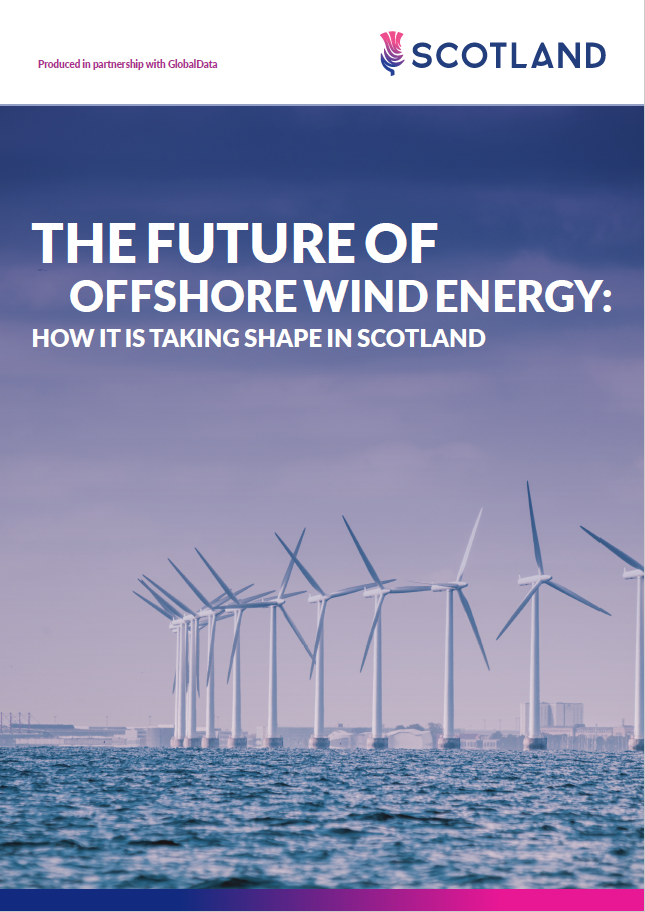
Offshore wind energy remains a largely untapped resource globally, but Scotland’s ScotWind leasing round is likely to unleash a high volume of innovative projects and increase generation capacity.
Currently, 8.8GW is generated by onshore wind in Scotland, with 2.1GW from offshore wind. Yet over the next ten to 15 years, these figures are projected to change significantly. There are plans to dramatically upscale this capacity to generate 42GW of wind energy in Scotland, with more than 30GW possible from offshore wind farms – and a significant proportion being generated by floating wind turbines.

To achieve these ambitions, the ScotWind leasing round is an integral driver. Under the initiative, developers have applied for seabed rights to build major offshore wind projects in Scottish waters.
“The plans are significant and challenging, but also come with huge opportunities,” says David Rennie, head of low-carbon energy at Scottish Enterprise.
Enhancing floating wind capabilities in Scotland
Provided all 20 approved ScotWind projects are developed according to plan, it would result in a substantial energy generation capacity of 30GW. From this total, 19.2GW would come from 14 floating wind farms. The remaining six projects are bottom-fixed wind farms. The advantage of floating wind turbines is that they can be positioned in deeper waters where there are stronger winds, meaning that more energy can be generated.
Scotland already has expertise in floating wind. The country is home to the world’s first commercial floating wind farm, Hywind Scotland, 18 miles off the coast of Peterhead, which began operations in 2017. This year the country also became home to the world’s deepest fixed offshore wind farm at the Seagreen development off the coast of Angus to the east of Scotland.
Developments in the smaller leasing round, Innovation and Targeted Oil & Gas (INTOG), represent a further opportunity to develop Scottish expertise in floating wind technologies – with many of the projects expected to be operational before those in ScotWind.
The majority of ScotWind projects are planned for the waters to the east of Scotland. Among them is the project with the highest energy generation capacity in the leasing round. Being developed in partnership with SSE Renewables, CIP and Marubeni, the Ossian floating wind farm will be capable of generating 3.6GW.
ScottishPower Renewables is also developing three new offshore wind farms with a combined capacity of 7GW, including two floating wind farms being built in partnership with Shell. The third ScottishPower Renewables development is the only ScotWind project off the west coast of Scotland. MachairWind is a fixed offshore wind farm with a capacity of 2GW.
“It is very much a sign of ambition and confidence that Scotland has both the waters and aspects of the supply chain to deliver this. But more work is needed to develop the rights supply chain here in Scotland,” adds Rennie.

Economic opportunities in offshore wind
Construction, operation, and maintenance of these new offshore wind projects in Scotland will generate multiple economic opportunities such as increasing supply chain investment and creating jobs, while producing a substantial amount of renewable energy.
Projects in the leasing round provide significant investment for Scotland, with the Scottish Government requiring all ScotWind developers to use the domestic supply chain as much as possible. Turbines, foundations, mooring system components and cables are all key aspects of the supply chain. The combined value of components and materials is widely expected to amount to many billions.
“For every gigawatt of capacity built for Scotland, that would reflect a billion pounds of investment into Scotland,” adds Rennie. “Historically, we had the oil & gas supply chain. It is now an energy supply chain. We have companies working in oil & gas, but the same companies are now also working in hydrogen, carbon capture and offshore wind. It is a much more diverse supply chain now than maybe it was five or ten years ago.”
Overcoming grid connection challenges for wind turbines
As with all new renewable developments in the UK, there remain issues with connecting to the grid and energy storage. As a result, uncertainty surrounds many planned developments. However, hydrogen offers a solution to both problems. Using wind energy to power electrolysers to split water into its chemical elements means that a grid connection may not necessarily be needed, and the resulting hydrogen can also be stored for later use.
“For a number of the ScotWind projects, there are questions about getting a grid connection,” says Rennie. “Some will and some may not. If they can’t, the only way they can proceed is to produce hydrogen, and either transport back to shore or store it.”
Alongside offshore wind, hydrogen produced from renewables or low-carbon methods is another core priority in Scotland’s energy transition ambitions to reach net zero by 2045 – five years before most countries. The country aims to have 5GW of installed capacity for hydrogen by 2030, which will soar to 25GW by 2045. While these are significant numbers, there is the confidence and determination within Scotland to make this a reality.
The combination of ambition and technical expertise is likely to help Scotland deliver on its clean energy transition for both floating wind and hydrogen.
“We are attracting a lot of attention from countries that are looking at floating wind,” says Paul O’Brien, manager of the DeepWind offshore wind cluster. “A lot of nations are going to be coming here to see how you achieve this.”
To learn more about how Scotland is shaping the future of offshore wind, download the specially commissioned white paper below.




